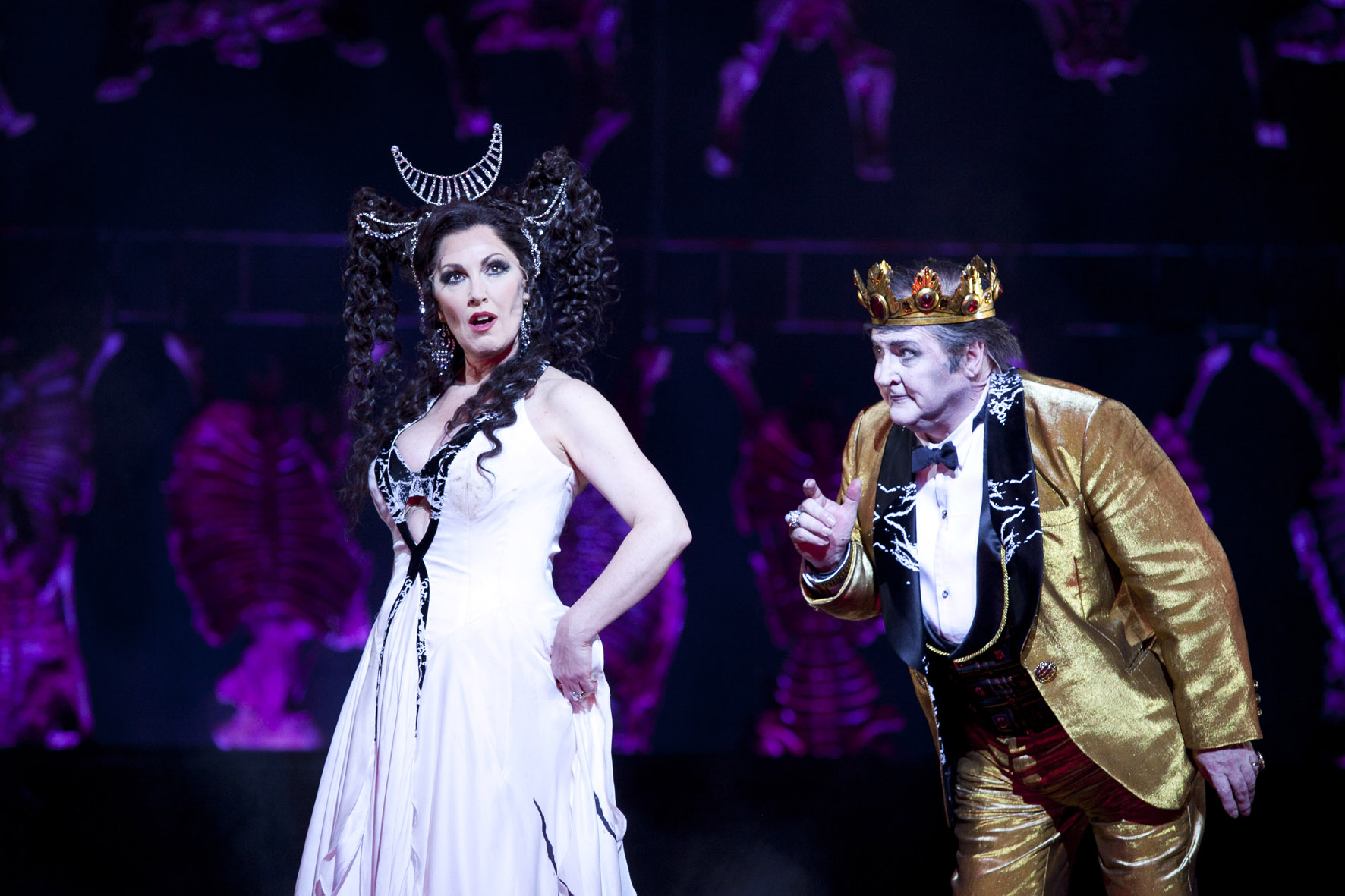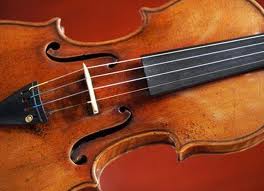‘Prelude and Cube’: Kats-Chernin Talks About Her Anniversary Piece For The Australian Brandenburg Orchestra

“It’s like a blank canvas for large scale emotion. When you hear it, you can let your mind wander – thinking about what this orchestra has done, all the different instruments their sounds…their colour…..” The words of composer Elena Kats-Chernin as she sits in the studio of her Sydney home, talking about the newly written Prelude and Cube, commissioned by the Australian Brandenburg Orchestra for its 25th anniversary this month. The work is written for orchestra and choir and is in two parts, nearly equal in duration, only loosely structured on the Prelude and Fugue synonymous with JS Bach.
Surrounded by the vivid colours of her study and its artworks, Elena Kats-Chernin continues: ” About a year ago I got a call from Paul (Paul Dyer AO, Artistic Director of the ABO) asking whether I was interested in writing a piece for the orchestra. It was an unusual request because commissioned works are not part of their repertoire. Their repertoire usually goes back in history. For this, he wanted to do something different .”
“I was about to go overseas, so we met when I returned – it was August 2013 by now. As always, Paul was vibrant, positive, full of life and music and he was bubbling with all sorts of ideas for this piece. He wanted to celebrate with the Magnificat of JS Bach for choir and orchestra and thought it would be great to commission a companion piece on the programme.”
It began to dawn on Kats-Chernin that with the concert planned for February 2014,the time at her disposal was far less than ideal. Calming herself, she says “I took a deep breath. Paul was so optimistic it never crossed my mind to think otherwise than to do it. I believed I had the ability to do this; if all the energies were right, if my attitude was right and I was working with great people who have a positive outlook, then it will be good. The timing was still very scary and I had to start working the very next day. It has been a big responsibility and an honour to be creating something historic for this fabulous orchestra that’s got cult status. I am not a Baroque composer, not even necessarily writing in that style. I can’t believe I’m on the same programme as Bach who is the genius of all geniuses – there is no better composer – there is no perfection like his!”
Kats- Chernin wanted Dyer to be involved in the process. Giving herself a 2 week deadline to produce an outline for him, she began to gather the elements of the piece, starting with all the forces of the ensemble over the years.
Inspiration, creativity – how are these triggered in response to a task with a deadline, rather than emerging as and when the ideas well within? “I don’t actively look for inspiration. I put myself in a position where I can receive inspiration from wherever it comes. The most important thing is to be open to all sorts of influences – I’m a little bit like sponge – I take in everything and that’s why I don’t go to concerts too much because that’s too much music in my head. My inspiration actually comes while I’m at the piano. My subconscious works very hard and I just let it do its job. I always believe my subconscious will just make me do it – it’s like having another person in me.”
Pomp, passion, epic, moving. These are the words which drove Kats-Chernin as she worked through the Prelude. “It had to be grand without being overly celebratory; it had to have what other pieces have, which stand out as milestones in history. They are not necessarily the most virtuosic or happy. I had to dig deep and really look for this piece – it wasn’t there on the surface at all. This had to come from much further down. Paul wanted something deeper, bigger and more profound for something that was to be an anniversary piece.”
Kats-Chernin moves to the piano and plays from the precious score, written by hand in heavy black ink. Looking at what she has created she confides a powerful observation: ” I love the moment when I compose something more because that takes away the nervousness, that anxiousness about whether I will come up with anything – maybe I’ve said everything that I’ve wanted to say in my life. I’ve written so many pieces is there anything left?”
Clearly, Kats- Chernin still has a lot to say, musically speaking. The Prelude begins with a moving bass, played by the lower strings. The instruments and voices enter in turn, growing slowly, creating layers of different textures – harpsichord, organ, theorbor, timpani, soprano saxophone (the only modern instrument in the piece) and choir, building to a resounding climax in a major key. “
The music dies away. “I can’t do big finishes” she says. “I do quiet endings, and I wanted Paul to play the ending because it is his orchestra.” Her right hand breaks into meandering broken chords over changing bass line harmonies.
And then we regard the Cube.”For this, I used the words zest , vigour, energy and robustness. The shape of a cube describes this piece perfectly. A cube has many edges and surfaces and can contain more cubes inside it -this piece is a bit like a cube inside a cube – I wanted something that has lots of sides that fit with each at various times. It is in the very clear four bar structures with an occasional extension.”
The Cube, as written, starts with the voices – “but we will have to try it first to see if it will work. I may have to change things – we will see” cautions Kats-Chernin. It is in four parts, soprano, alto, tenor and bass, with occasional solo voices, accompanied by the viola. Kats-Chernin plays a 2 note descending figure whilst the right hand joins in a syncopated rhythm. The textures build with quintessentially Bachian chord progressions woven through them. The choir joins in, their notes rising to a joyful climax before the return of a contemplative figure in the bass, the melody subdued and lyrical above it.
Both the Prelude and Cube are distinctly tonal, but there are little if any structural similarities with Bach’s Preludes and Fugues. ” I don’t write fugues and I don’t believe in the rules of form – they’ re old, man-made forms. They work for some people but not for me – it’s like a cage and I have to get out. It took me a long time to become confident with this approach. A lot of my Ragtimes are in Rondo form – but that happened intuitively. It felt right for little motifs to come in preceded by an introduction and ending with a coda. Prelude and Cube is not without a structure – it starts and ends in a similar way and there are motifs that are heard throughout the piece. It is important to bring back melodies that have been heard in the piece, otherwise people feel unsatisfied.”
For the text, Kats-Chernin has drawn on the words of Martin Luther from the 16th century ‘wunderbar sind deine Werke’ (your works are wonderful) as well as the Magnificat in German rather than Latin. “German is my language and Bach’s” she says. “I lived there for a long time, the rhythm of the words and the mood are perfect and I feel the words. It even finishes in B – for Bach!”
Writing for Baroque instruments was a new frontier for Kats-Chernin. She admits to being unfamiliar with period instruments , although after her 2012 collaboration with Barrie Kosky in re-inventing the music of Monteverdi’s operas for the Komische Opera Berlin she is not entirely new to the style.”The theorbor and the gamba featured in these scores – but I am still learning about these instruments. What’s very important to me and something I am excited about is that unlike the modern orchestra for whom the score has to be fully written out, the musicians of the ABO are different. When I met with Paul in December, we tried to finalise the score and put in all the markings – but Paul said these are very flexible people – Baroque musicians can improvise. So for some instruments, all I wrote was the figured bass indicating the harmonies and we will work out the textures in rehearsal. It made me feel less stressed about writing for these instruments – I can’t know more than their exponents so I’m delighted that they can create sounds within my framework – they know what works and what doesn’t.
“Looking back on her Prelude and Cube, Kats-Chernin appears happy, if a little apprehensive because it has yet to receive its public debut. ” I had to add some instruments that weren’t originally in the piece because extra players came on board. Paul asked if I would mind changing the score. I couldn’t just double the parts. I actually had to change texture. I am always happy to do this because change is good. Change makes you less comfortable and makes you question everything again. It was a nice challenge – I like challenge even though it scares me. It makes me better.”
Shamistha de Soysa for SoundsLikeSydney©







